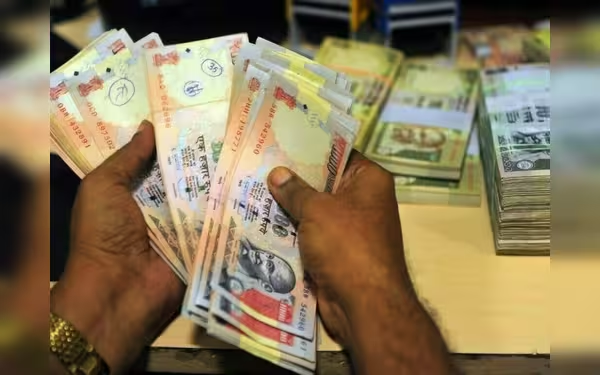Saturday, November 16, 2024 05:51 PM
Indian Rupee Hits Record Low Amid Dollar Rally and Yuan Decline
- Indian rupee expected to open at record low against US dollar.
- RBI intervenes to stabilize rupee amid currency market volatility.
- Trump's election win exacerbates currency fluctuations.
 Image Credits: brecorder
Image Credits: brecorderThe Indian rupee is set to open at a record low against the US dollar, influenced by the dollar index rise and yuan decline.
The Indian rupee is facing a challenging situation as it is expected to open at a record low against the US dollar. This decline is primarily influenced by two significant factors: the rise in the dollar index and the drop in the Chinese yuan. The recent victory of Donald Trump in the US Presidential election has further complicated matters, leading to increased volatility in currency markets.
On Tuesday, the rupee is projected to open between 84.40 and 84.42 to the US dollar, surpassing its previous all-time low of 84.3925 recorded on Monday. This downward trend has been consistent since Trump’s election win, raising concerns among traders and economists alike. Many believe that the rupee could have fallen even further, potentially nearing the 85-level, if not for the intervention of the Reserve Bank of India (RBI).
Traders have noted that the RBI has been quite active in the currency market, providing support to the rupee by offering dollars. One trader mentioned that the RBI’s approach has been “aggressive on the offer (on dollar/rupee),” which has helped maintain a sense of stability in the market. The current sentiment suggests that while the RBI is allowing the rupee to weaken in response to the overall strength of the dollar, it is doing so at a controlled pace to avoid causing panic among investors.
This situation highlights the delicate balance that the RBI must maintain. On one hand, a weaker rupee can make exports more competitive, which is beneficial for the economy. On the other hand, a rapid decline can lead to inflation and increased costs for imports, affecting everyday consumers. As the global economic landscape continues to shift, the RBI’s strategies will be crucial in navigating these turbulent waters.
The Indian rupee's struggle against the dollar is a reflection of broader economic trends and geopolitical events. As the situation evolves, it will be essential for both traders and consumers to stay informed about currency fluctuations and the potential impacts on the economy. Understanding these dynamics can help individuals and businesses make better financial decisions in uncertain times.













